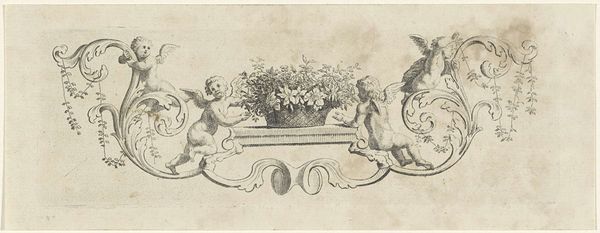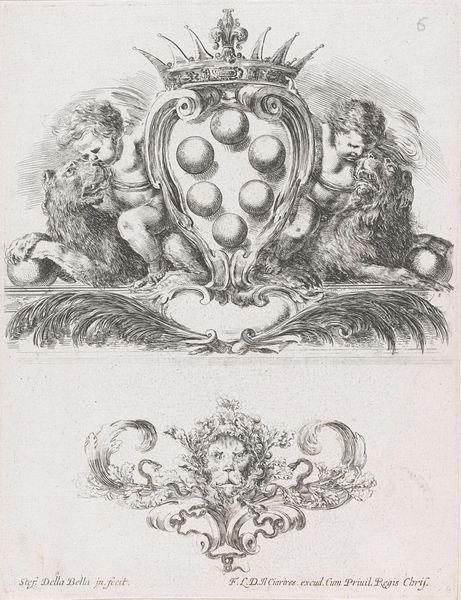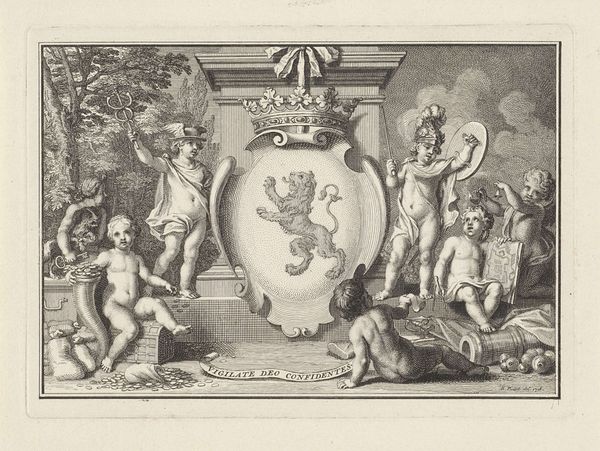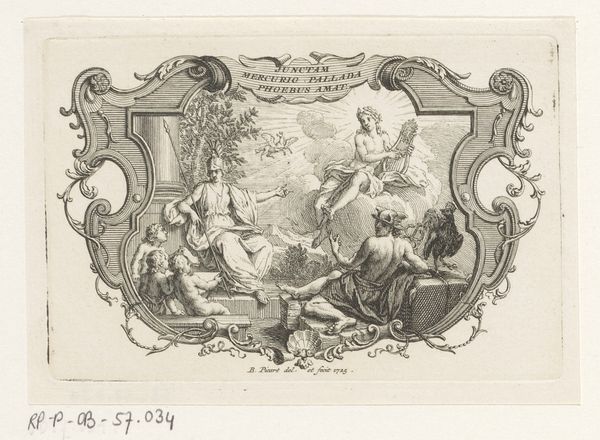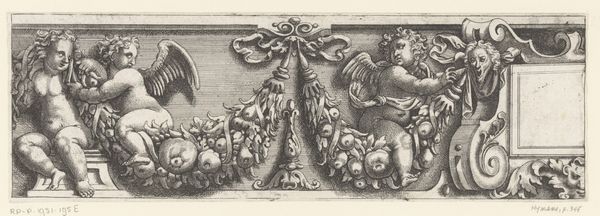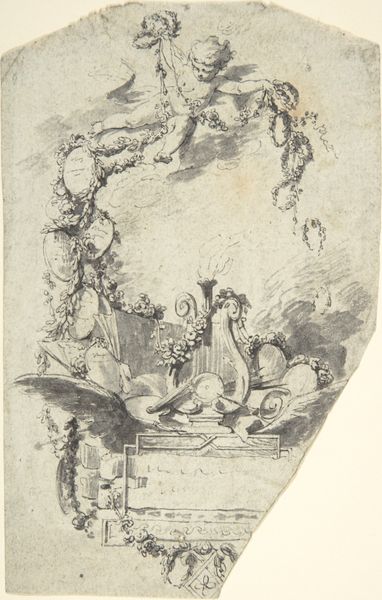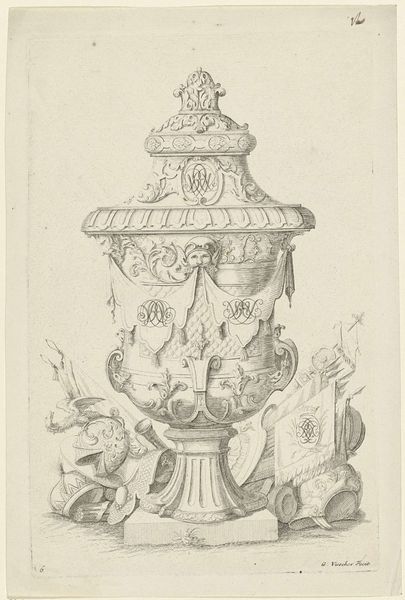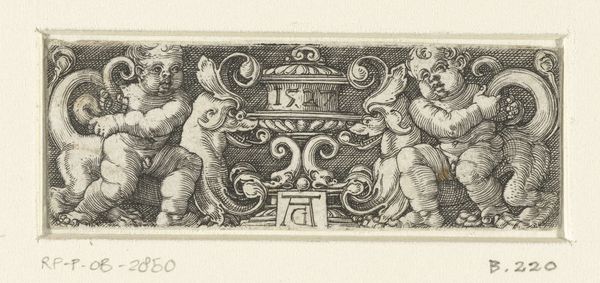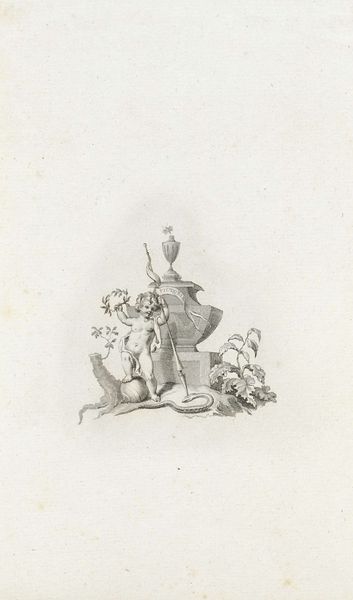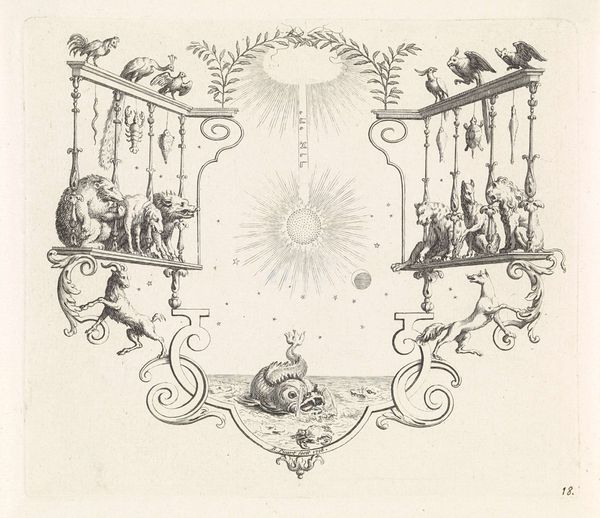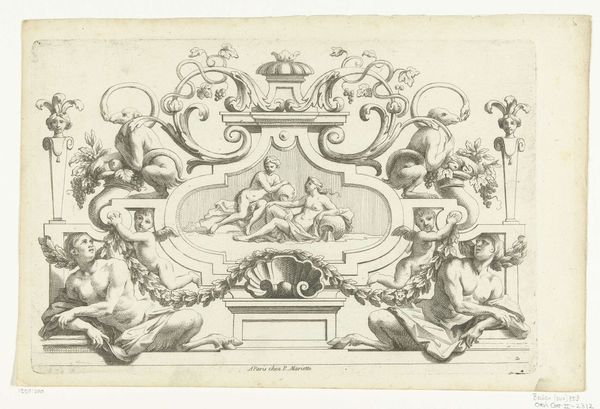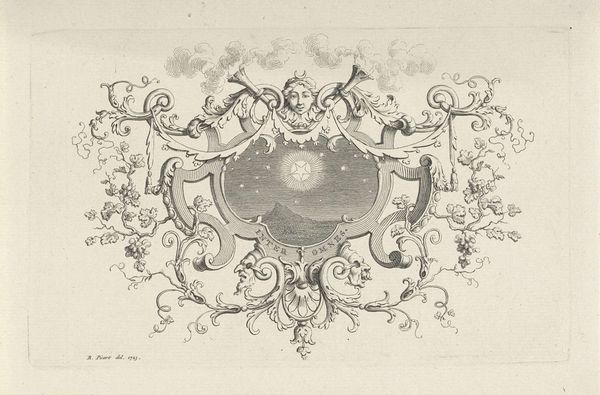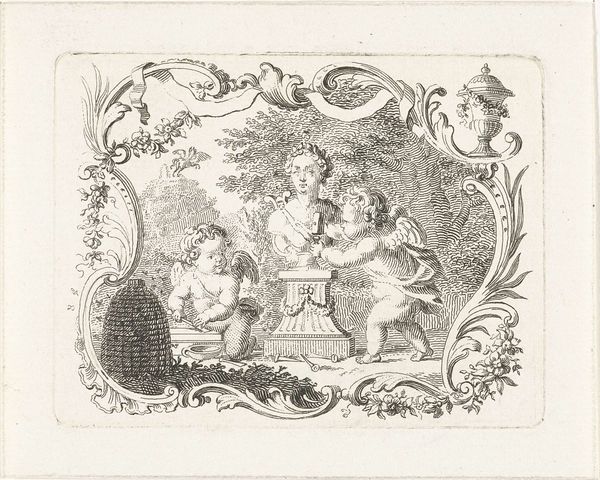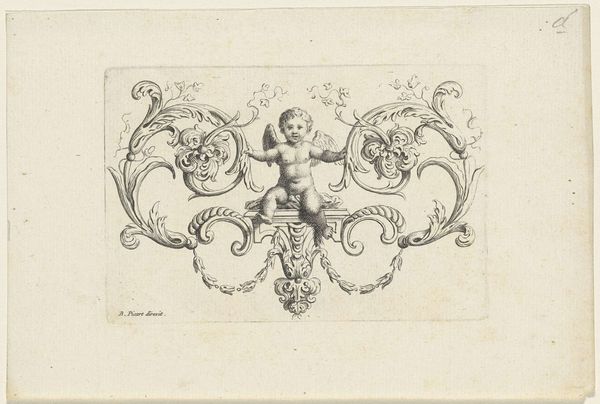
print, engraving
#
allegory
#
baroque
# print
#
old engraving style
#
traditional media
#
pen-ink sketch
#
line
#
history-painting
#
engraving
Dimensions: height 76 mm, width 117 mm
Copyright: Rijks Museum: Open Domain
Curator: Here we have Simon Fokke's "Putti rond een gekroond wapenschild," or "Putti Around a Crowned Coat of Arms," created in 1744. The artwork, residing here at the Rijksmuseum, is an engraving. Editor: It’s delightful! There’s a whimsical air to the whole composition, like something out of a Baroque dream. All those cherubic figures lounging on clouds… very ornamental, very… soft. Curator: It's fascinating how Fokke utilizes line engraving to convey volume and texture with such limited means. Think of the tools used: burins, scrapers, perhaps burnishers on a copper plate. The matrix from which numerous prints would be produced…it really makes you consider the economics of image distribution at the time. Editor: True, but the immediate effect is undeniable! The contrast between light and shadow creates depth, drawing the eye to the central coat of arms. And the positioning of the putti - those cherubs - they’re not just floating; they’re actively framing the heraldry, almost like actors on a stage. Curator: Absolutely. And consider the symbolism embedded in this piece. The sword, the scales... they are not just decorative elements. They signify power, justice, and perhaps nobility tied directly to the intended recipient and patron for this particular armorial rendering. The layers of socio-political meaning are built right into the physical layers of ink. Editor: Semiotically dense, for sure. And while all those layers provide great academic pleasure, one can't help but be captivated by its pure aesthetic charm. It presents a captivating, lighthearted statement about power and legacy. Curator: Precisely! I mean, from a materialist perspective, understanding its creation informs how we interpret the values and messages being circulated within 18th-century society, revealing aspects of artisanal workshops to elaborate court culture. Editor: I agree completely. I love how, despite our different approaches, we arrive at an enriched appreciation of the piece. A piece which transcends simple binary interpretations and finds deeper relevance instead.
Comments
No comments
Be the first to comment and join the conversation on the ultimate creative platform.
